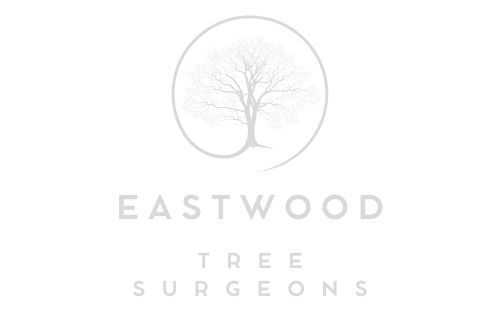Is Your Tree Diseased? When Felling is the Only Cure to Protect Other Plants
Trees bring life, shade, and structure to any garden or landscape, but even the strongest specimens can succumb to disease. When that happens, it’s not just the affected tree that’s at risk — nearby plants, shrubs, and other trees can quickly become infected. In severe cases, professional felling becomes the only practical and responsible solution. At Eastwood Tree Surgeons, we regularly assess diseased trees across Eastwood and Nottingham, providing expert guidance on when removal is essential to protect the wider environment.
Understanding Tree Disease and Its Impact
Tree diseases come in many forms, from fungal infections to bacterial or pest-related infestations. Each type can weaken the tree’s structure, compromise its growth, and spread to other vegetation. Common culprits include:
- Dutch Elm Disease: A highly destructive fungal infection spread by elm bark beetles.
- Ash Dieback: A fungal disease that causes leaf loss, brittle branches, and eventual death.
- Honey Fungus: A root-decaying fungus that spreads underground and can infect nearby plants.
- Phytophthora: A water mould that attacks roots, leading to decay and death in a range of species.
Once an infection takes hold, it can travel quickly through root systems or airborne spores, making early detection vital.
When Tree Felling Becomes Necessary
While modern tree care techniques can sometimes control or slow disease, there are situations where felling is the only effective solution. Removing one diseased tree may feel like a loss, but it can save an entire landscape from further damage.
1. When the Disease Is Beyond Treatment
If the infection has spread to the trunk, roots, or canopy, recovery may no longer be possible. In these cases, removing the tree prevents the disease from spreading through spores, soil, or contact with neighbouring plants.
2. When the Structure Is Compromised
Diseased trees often become brittle and unstable, increasing the risk of falling branches or complete collapse. Professional felling by Eastwood Tree Surgeons ensures the tree is removed safely before it becomes a hazard.
3. When Containment Is Critical
Certain fungal and bacterial diseases can linger in the soil long after an infected tree has died. By carefully removing the entire tree — including its roots and infected material — professionals can minimise the risk of reinfection.
4. When Other Plants Are at Risk
In gardens or woodlands where plants grow closely together, disease can spread through shared root zones or wind-borne spores. Prompt removal of an infected tree helps protect healthy vegetation and maintains the ecological balance of your outdoor space.
The Importance of Professional Diagnosis
It’s not always easy to tell whether a tree is diseased or simply stressed due to environmental conditions. Symptoms such as discoloured leaves, oozing bark, or dieback in branches could signal infection — but a professional diagnosis is essential.
At Eastwood Tree Surgeons, our trained arborists conduct detailed inspections to identify the cause of decline. We look for key indicators such as fungal growth, unusual leaf patterns, and changes in bark texture. Once the diagnosis is confirmed, we’ll recommend the most appropriate course of action — whether it’s pruning, treatment, or felling.
Responsible Tree Felling and Disposal
When felling becomes necessary, it’s not just about cutting down the tree. Diseased wood must be handled with care to avoid spreading spores or pathogens. Professional tree surgeons ensure all infected material is safely removed from site and disposed of correctly.
Additionally, the surrounding soil may require treatment or monitoring to prevent the disease from re-emerging. In some cases, replanting with resistant tree species can restore the area’s natural beauty without risking further infection.
Preventing Disease Spread in the Future
Once a diseased tree has been removed, it’s important to focus on prevention. Regular maintenance and proactive care can make all the difference in protecting the health of your remaining trees. Here’s how:
- Schedule annual inspections with a qualified arborist to spot early warning signs.
- Ensure proper pruning to encourage good airflow and reduce fungal growth.
- Remove deadwood promptly to prevent decay and pest infestation.
- Avoid overwatering or compacting soil, as these can weaken roots and invite infection.
- Plant diverse species to reduce the spread of disease across similar tree types.
By following these steps and working with experienced professionals like Eastwood Tree Surgeons, you can maintain a healthy, thriving garden landscape.
Conclusion
Tree disease can be devastating if left unchecked, spreading quickly and affecting the health of your entire garden. While it can be difficult to remove a mature or cherished tree, felling is sometimes the only way to safeguard surrounding vegetation. Acting quickly ensures the infection is contained, protecting your plants, soil, and environment for years to come.
Eastwood Tree Surgeons offers expert inspection, diagnosis, and safe felling services throughout Eastwood and Nottingham. Our professional team ensures that every decision is made with both safety and environmental health in mind. When disease strikes, taking decisive action today can preserve the beauty and balance of your landscape tomorrow.
Call us on: 01773 304 697
Click here to find out more about Eastwood Tree Surgeons
Click here to complete our contact form and see how we can help with your tree needs.

